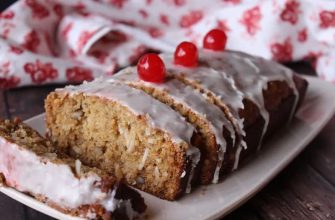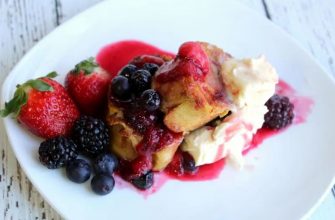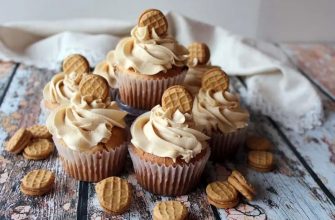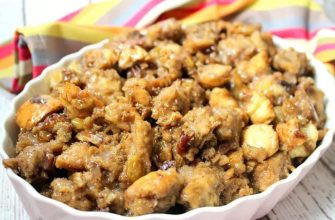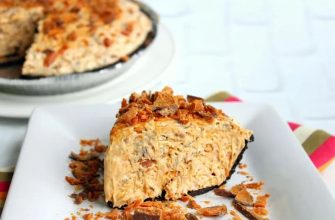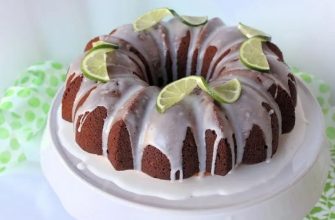Discover the exquisite taste of a graham cracker crust enveloping a light and velvety lemon-infused filling, crowned with a luscious layer of creamy sour cream. If you relish the zesty and invigorating flavor of lemons and adore cheesecake, this tantalizing dessert will undoubtedly become your new culinary obsession!
Ingredients & Substitutions
- Crust: Ensure thorough coverage of the graham cracker crumbs with melted butter to bind the crust together perfectly. Opt for a store-bought crust or experiment with alternative cookie crusts like vanilla wafers or gingersnaps.
- Filling: Maintain all ingredients, particularly the cream cheese, sour cream, and eggs, at room temperature to prevent lumps in the cheesecake.
- Sour Cream: Utilize sour cream both in the filling and the topping. Its inclusion in the filling enhances the cheesecake’s smooth texture with a subtle tartness, while combining it with confectioners’ sugar for the topping adds an extra layer of flavor. Moreover, it can conceal any imperfections in the cheesecake. Alternatively, Greek yogurt can serve as a substitute.
- Lemons: With this being a lemon cheesecake, expect a burst of lemon in every bite. You will need 2 large lemons for this recipe. Begin by zesting the lemons to obtain approximately 2 tablespoons of zest. Then, extract lemon juice from each lemon until you have around 6 tablespoons in total. Depending on their size, you may require an extra lemon.
The Importance of the Water Bath
In a word, yes. Employing a water bath while baking cheesecakes prevents the edges from overcooking and ensures an evenly colored, crack-free surface. This scientific marvel occurs because water cannot surpass 212°F (100°C) without evaporating into steam. Consequently, the heat distributes more evenly, acting as a buffer that shields the edges from overcooking. Additionally, the steam contributes to the cheesecake’s smooth top by imparting moisture during the baking process.
Determining Cheesecake Doneness
The cheesecake is ready when the sides are set, yet the center remains slightly jiggly. You can assess the internal temperature of the cheesecake (150°F/65°C) for doneness. Another method involves tapping the outside of the pan with a wooden spoon. If a slight jiggle is detected, it is done. Since the surface will be covered with the sour cream topping, there is no need to worry about creating holes.
Storing Lemon Cheesecake
To preserve the cheesecake’s freshness, cover it and store it in the refrigerator for one to two days. For extended storage, tightly wrap the cheesecake in plastic wrap or place it in an airtight container, where it will keep for up to three days in the fridge.
Can Cheesecake Be Frozen?
Absolutely! It is advisable to freeze the cheesecake without the sour cream topping. Prepare the topping separately and apply it to the cheesecake the day before serving. Follow these steps to freeze a cheesecake:
- Allow the cheesecake to cool completely.
- Place the uncovered cheesecake in the freezer for approximately one hour. If the cheesecake is in a springform pan, remove the pan sides after one hour.
- After freezing, tightly wrap the cheesecake in plastic wrap.
- Transfer the wrapped cheesecake to a sealed freezer bag or wrap it in aluminum foil. Remember to label and date the cheesecake. It will remain fresh for up to three months in the freezer.
- When ready to enjoy, thaw the cheesecake in the refrigerator.
Ingredients
Crust
- 1 cup (85 g) graham cracker crumbs (about 7 sheets of graham crackers), crushed
- 1 tablespoon granulated sugar
- 3 tablespoons unsalted butter, melted
Filling
- 2 packages (8 ounces/230 g each) cream cheese, at room temperature
- 2/3 cup (130 g) granulated sugar
- 1/3 cup (80 g) sour cream, at room temperature
- 1 teaspoon vanilla extract
- 2 large eggs, at room temperature
- 2 large lemons, zested (about 2 tablespoons) and juiced (about 6 tablespoons)
Topping
- 1/3 cup (80 g) sour cream
- 2 tablespoons confectioners’ sugar
Instructions
- Preheat the oven to 350°F (175°C). Line the bottom of a 7-inch springform pan with parchment paper.
Crust
- In a medium mixing bowl, combine graham cracker crumbs, sugar, and melted butter. Mix until well combined, ensuring all crumbs are coated in butter, resulting in a consistency resembling coarse sand.
- Press the crust into the bottom of the lined springform pan. Wrap two pieces of heavy-duty aluminum foil around the bottom and up the sides of the pan to prevent water from seeping in during the water bath. Set aside.
Filling
- Using an electric mixer or a stand mixer fitted with a whisk attachment, beat the cream cheese until smooth and creamy.
- Add the sugar and continue beating until smooth and creamy, scraping down the sides of the bowl as needed.
- Blend in the sour cream and vanilla until smooth and creamy, scraping down the sides of the bowl as needed.
- With the mixer on low, add the eggs one at a time until fully incorporated, scraping the sides and bottom of the bowl after each addition.
- Mix in the lemon zest and lemon juice until just incorporated.
- Pour the filling into the crust. Carefully place the springform pan into a deep roasting pan and position both in the oven.
- Pour hot water into the roasting pan, filling it 3-4 inches deep or about halfway up the side of the springform pan. Using a teapot with hot water facilitates easy pouring and ensures the water is already hot.
- Bake for 60-70 minutes until the top of the cheesecake turns golden. Remove from the oven and let cool on a wire rack.
Topping
- Once the cheesecake has completely cooled, combine the sour cream and confectioners’ sugar in a small bowl until incorporated. If there are any lumps, sift the confectioners’ sugar first. Spread the mixture evenly over the cheesecake.
- Transfer the cheesecake to the refrigerator to chill for at least 4 hours, up to overnight.
- Serve chilled.







